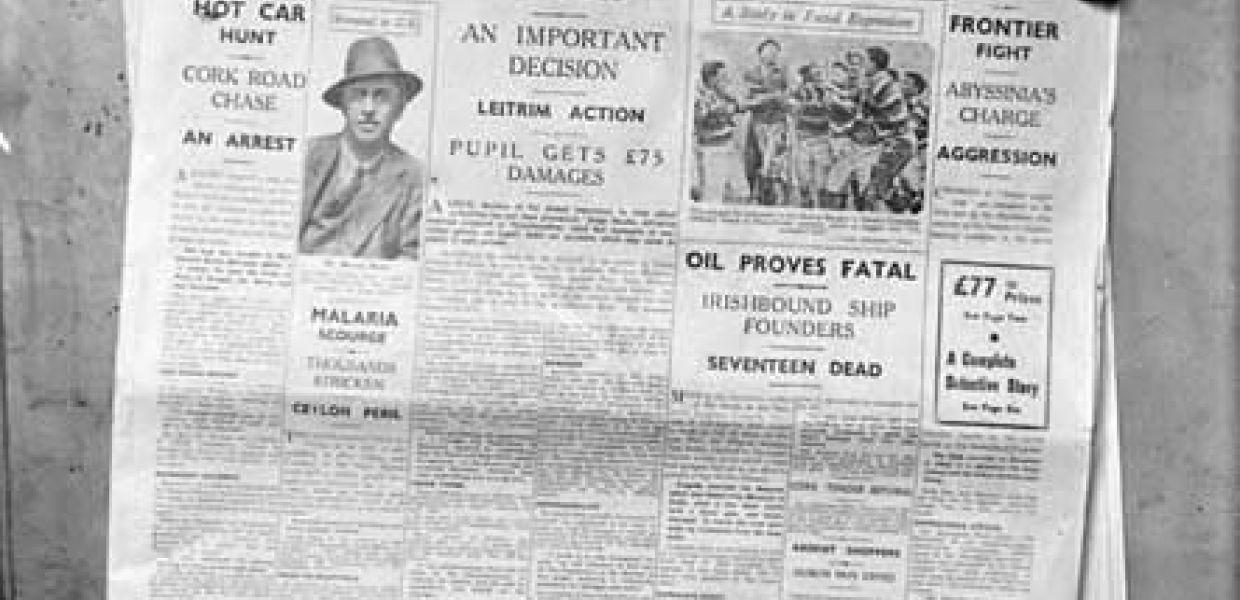Investigating how child sex abuse was reported in historic newspapers

For Dr Delap, newspapers are a vital source for her research.
Following the successful call for researchers making use of historic newspapers, a workshop was held on May 13 at NIOD Institute for War, Holocaust and Genocide Studies in Amsterdam. It aimed to understand the precise workflows and methodologies researchers use, shape the kind of tools that can be built to them with these workflow and define how data are made available for re-use.
Around 20 researchers attended, from PhD students and early career researchers to senior researchers and university lecturers, each bringing in the discussion his or her own research area and expertise.
What topics can be explored with newspapers?
Dr. Lucy Delap, University Lecturer in Modern British History at the University of Cambridge was among the participants in the workshop, exploring the potential for exploiting the Europeana Newspapers corpus in new ways through the lens of her own research. Her research perspective was based on the project ‘Historicising ‘Historical child sex abuse’’, an initiative rooted in her wider work with the British knowledge exchange initiative, History & Policy.
The research aims to provide a fuller understanding of past social, legal and political responses to child sex abuse of 20th-century Britain in order to contextualize current public inquiries and contribute to future policy making. Mainly investigated through newspapers, this topic is both intensely relevant to contemporary concerns, and can be greatly enriched by historical newspaper content.
Why newspapers?
“We came to look at newspapers sources because we were aware of the lack of other sources… Of course, we are getting a particular kind of subset of cases by using newspapers, as most cases did not come to police attention. But we are condemned to work with a non-representative sample because that’s the best we can do. It still gives us a sense of who is abusing who, in what kind of settings”.
As Dr. Delap told us, newspapers are a valuable source for observing the various kinds of reporting (factual, sensational), documenting spikes of coverage and recording the kind of voices commenting on cases of child sex abuse.
Working mainly with digitised corpus, she and her research team are searching to create subsets of cases; however, “there is a lot more that we can learn about the kinds of tools - on visualization or semi-supervised searching and so on - that we could use”.
Digital aspirations
The workshop gave participants the possibility to shape fictional user scenarios and, in this way, think of the potentials digital technology and Europeana could offer in their own research.
“We’d like to generate a map of change over time in the reporting of child sexual abuse in different national contexts and to be able to chart the ways in which this issue came to the fore in certain moments as a result of certain scandals or certain historical circumstances. We could then test out our theories as to what causes change in how different kinds of public bodies respond to child sexual abuse.”
Focusing on Europeana, Dr. Delap suggested, “for me the real potential of Europeana is not about me sitting at home doing all the searches, but lies in collaborating with other European researchers so that each brings her or his own expertise to the table.
Rather than just creating a vast database of cases, our team would like to get different people bringing informed knowledge of their own national context and discussing this matter together”.
Researchers shared their ideas, Europeana listened, research innovation is hopefully upon us.
Many thanks to Dr. Lucy Delap for her time and feedback! The Europeana Research blog will continue to give information on how the newspapers are being reused in research.
